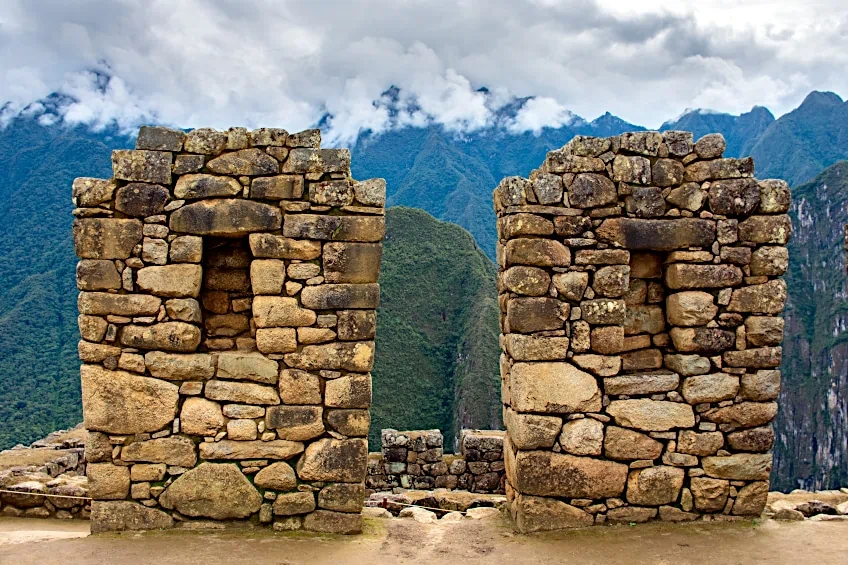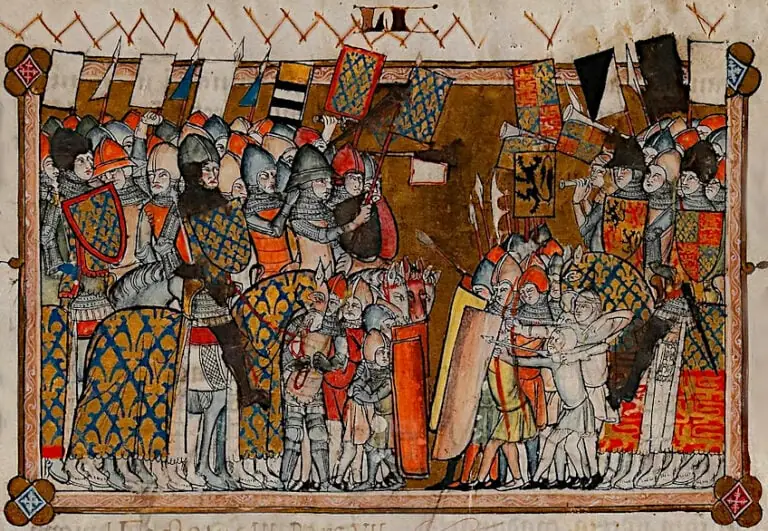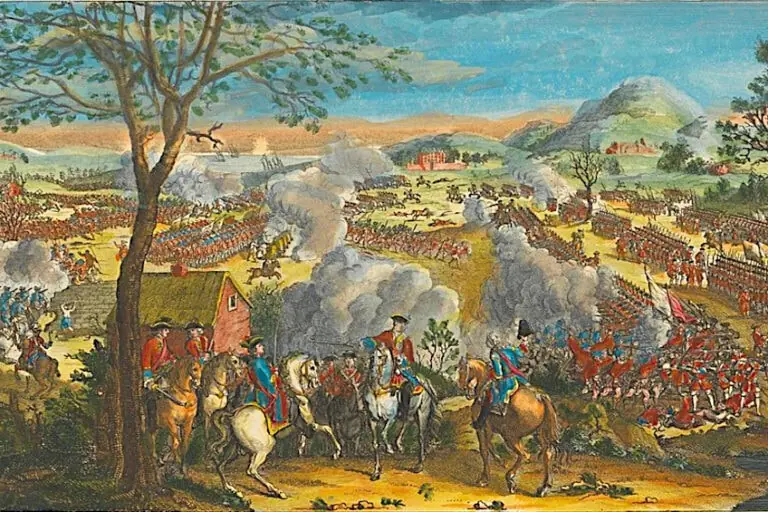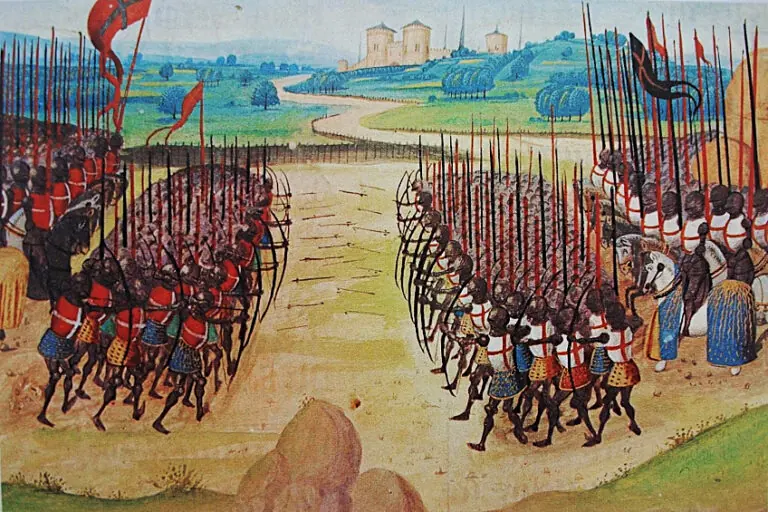Inca Architecture – Inca Structures and Building Techniques
What was unique about Inca architecture and what did the Incas build? Some of the finest stone constructions from any ancient civilization may be found in Inca architecture. Inca buildings were nearly always simultaneously functional and attractive: they are also incredibly consistent in design, with the Inca stonework of huge imperial structures echoing the more modest ones, with the only noticeable distinctions being their much higher scale and degree of finishing. In this article, we will look at the Inca structures, such as the Inca temples and Inca houses, that were prominent in that era.
Exploring Inca Architecture
The Inca architecture is South America’s most prominent pre-Columbian architectural style. Tiwanaku, which saw its first construction as early as the 2nd century BCE in present-day Bolivia, and finally collapsed around 1000 CE, left an architectural heritage to the Incas. The utilization of the terrain and available materials of the site as part of the structure was a key feature of the style. Cusco, the Inca empire’s capital, still has many magnificent instances of Inca architecture, however, many Inca masonry walls have been integrated into Spanish colonial constructions.
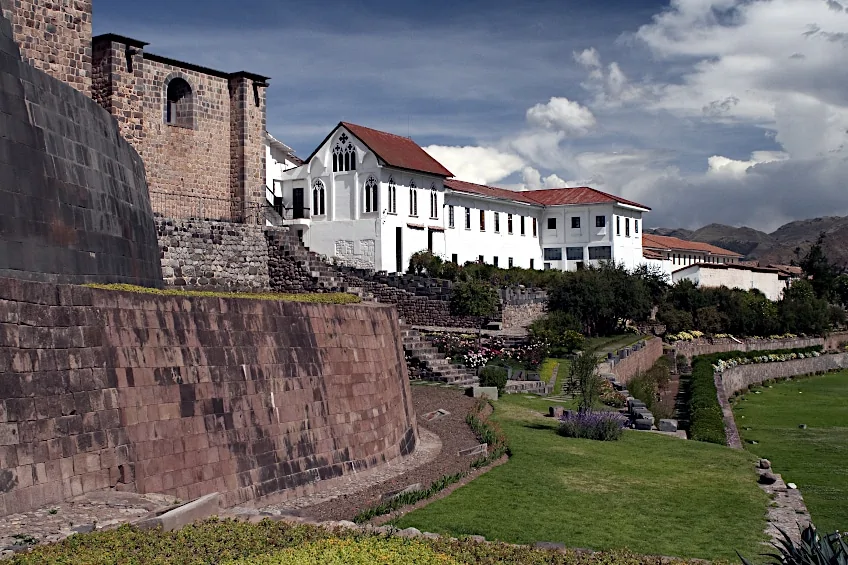 Dominican Monastery in Cusco built on the remains of the Coricancha
Dominican Monastery in Cusco built on the remains of the Coricancha
Machu Picchu, the famed royal complex, is a surviving specimen of Inca architecture. Ollantaytambo and Sacsayhuamán are two more important sites.
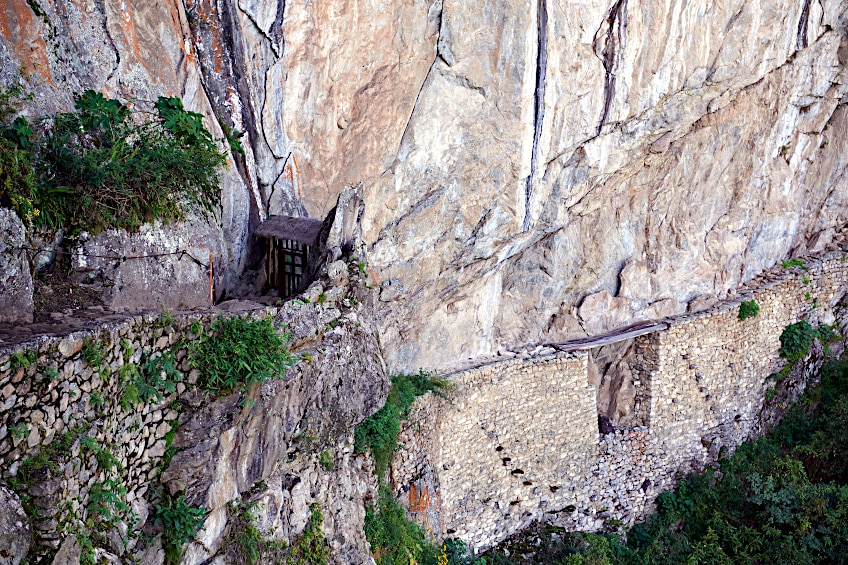 Ancient Inca road and bridge
Ancient Inca road and bridge
Like the Romans, the Inca administered their vast empire by means of a network of expertly built roads, most of it built across difficult terrain. Many remnants of these extraordinary feats of engineering have survived. This enormous road system ran the majority of the western length of the continent, using their unique architecture to visibly emphasize their imperial dominance along the border and ensuring swift movement of soldiers, trade goods, and messengers.
Characteristics of Inca Structures
Stone blocks, fieldstones, and soil put in mortar were used to construct Inca structures; adobe walls were also popular, generally built over stone foundations. The material used in Inca constructions varied according to location; for example, near the coast, massive rectangular adobe bricks were utilized, whilst in the Andes, local stones were employed.
Structure Shapes
The rectangular structure with no interior walls and a roof made of thatch and wooden beams were the most popular shape in Inca architecture. This fundamental form had numerous variations, featuring gabled roofs, and rooms that were divided by a long wall.
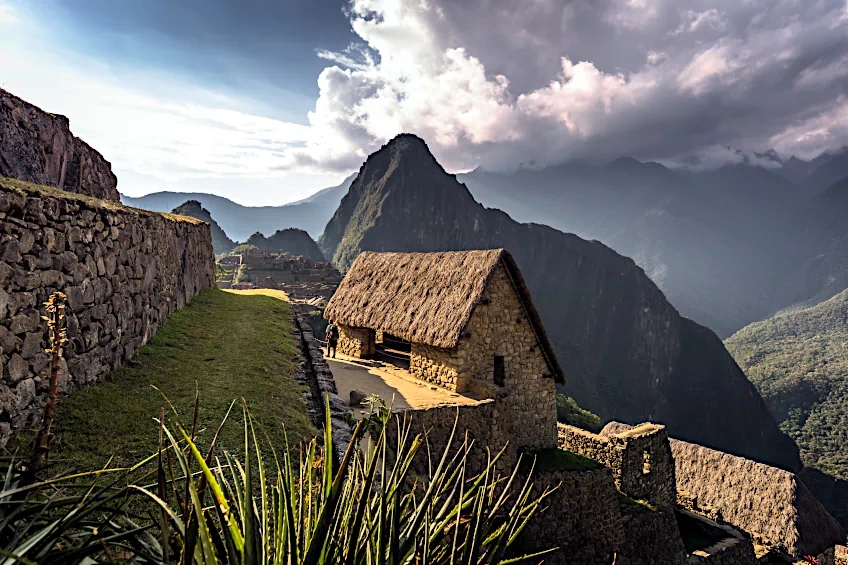 Thatched and gabled Inca structure
Thatched and gabled Inca structure
Rectangular structures were employed for a variety of purposes in practically all Inca structures, from simple dwellings to temples and palaces. Nonetheless, there are few examples of curving walls on Inca structures, particularly in areas outside of Peru’s central region. When two-story structures were created, the second level was approached from the outside through a stairwell or high elevation instead of from the first level. Wall openings, including niches, doorways, and windows, were typically trapezoidal in shape and might be ornamented with double jambs. Other types of decorating were sparse; some walls were painted or embellished with metal plaques, and on rare occasions, walls were carved with miniature creatures or geometric designs.
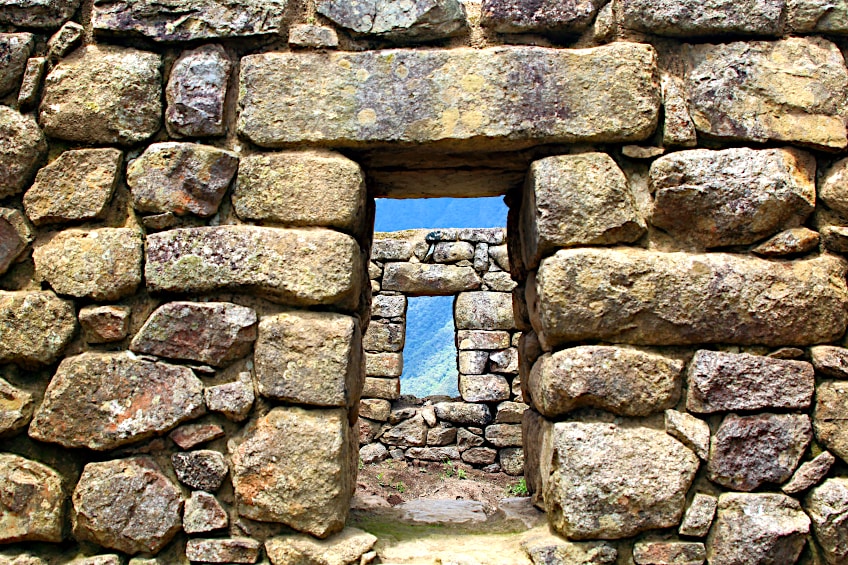 Inca Door Jamb Design
Inca Door Jamb Design
The kancha, a rectangular enclosure containing three or more rectangular houses built evenly around the main courtyard, was the most popular composite design in Inca architecture. Kancha units performed a variety of functions as the foundation for basic houses, temples, and palaces; also, numerous kancha could be linked together to create blocks in Inca communities.
The fact that the center portion of the Inca city of Cusco was made up of huge kancha, notably Qurikancha and the Inca palaces, attests to the prominence of these complexes in Inca design. Ollantaytambo, an Inca village situated along the Urubamba River, has the greatest surviving specimens of kancha.
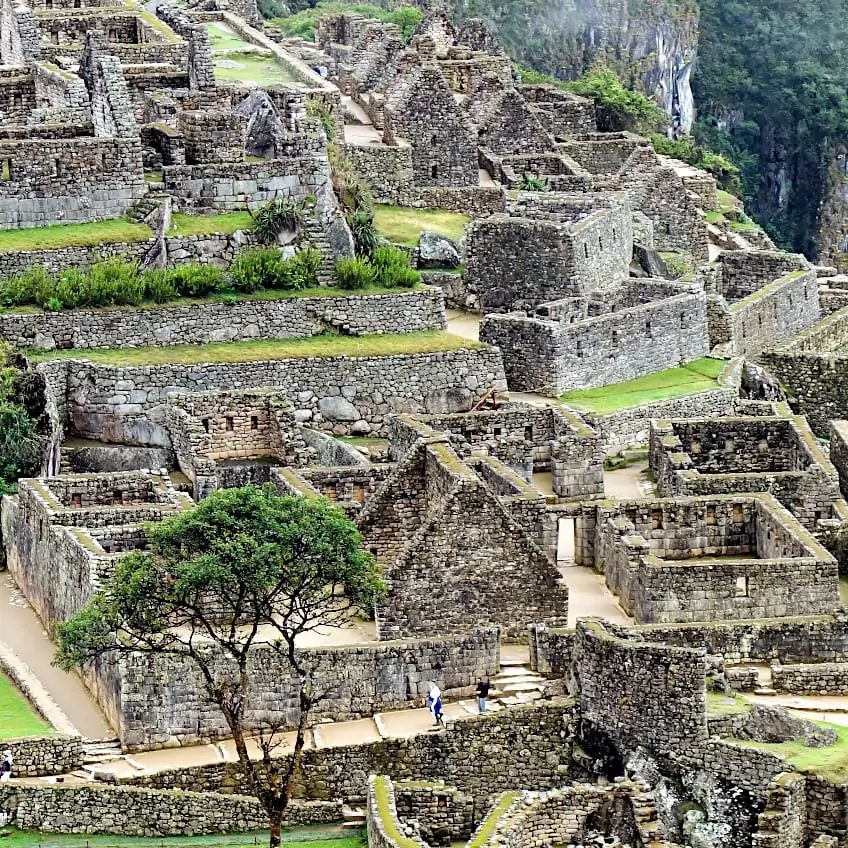 Layout of buildings and public spaces in an Inca settlement
Layout of buildings and public spaces in an Inca settlement
Incan Masonry
The exquisite masonry of Inca buildings, which contains finely cut and shaped stones carefully placed without cement, is highly renowned. Despite their popularity, most Inca structures were composed of fieldstone and adobe. John H. Rowe, the American archeologist divided Inca stonework into two forms in the 1940s: coursed, which has rectangular cut stones, and polygonal, which comprises irregularly – shaped blocks.
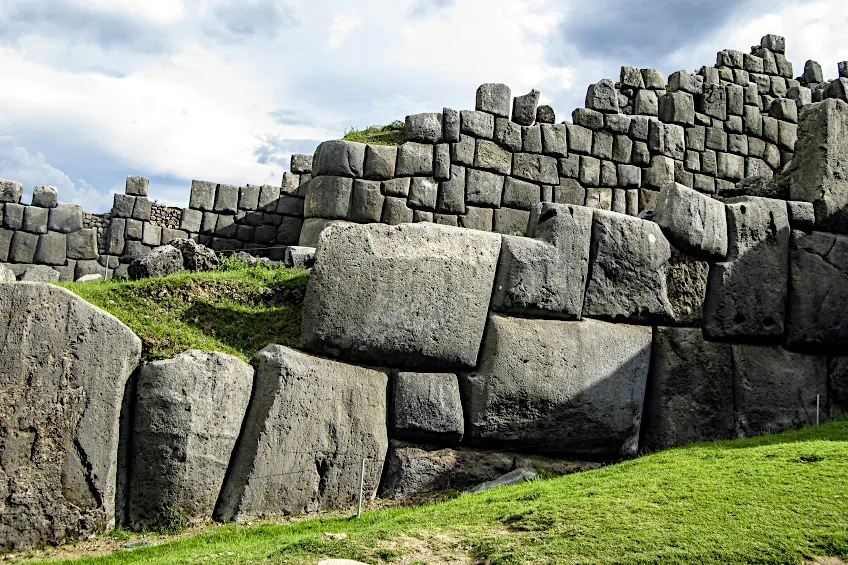 Inca irregular cut stonework techniques
Inca irregular cut stonework techniques
Around 40 years later, Santiago Agurto, the Peruvian architect defined four subtypes by splitting Rowe’s categories: Small-block cellular polygonal masonry, polygonal ashlar masonry using very massive stones, encased coursed masonry, the arrangement of stones in horizontal rows known as sedimentary coursed masonry.
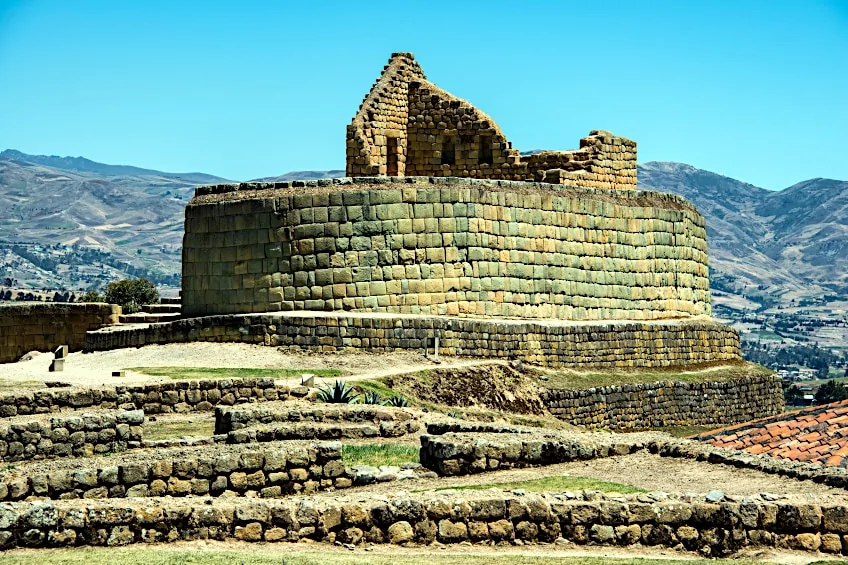 Inca coursed masonry techniques
Inca coursed masonry techniques
The first two were generally utilized on prominent structures or perimeter walls, while the final two were primarily used on river canalization and terrace walls. Inca stonework was influenced by the buildings of Tiwanaku, an archaeological site in contemporary Bolivia established many centuries before the Inca Dynasty, according to Luise Margolies and Graziano Gasparini. According to ethnohistorical traditions, the Incas were fascinated by these monuments and recruited a huge number of stoneworkers from neighboring areas to erect their own structures.
The Tiwanaka
Aside from these connections, they discovered other formal parallels between Inca and Tiwanaku architecture, such as the use of carved and polished stone blocks. The question of how knowledge was kept in the 300 years between the downfall of Tiwanaku and the emergence of the Inca Empire is an issue with this concept. As a response, John Hyslop has proposed that the Tiahuanaco stonework heritage was retained in the Lake Titicaca area at locations like Tanka Tanka, which contains walls that resemble Inca polygonal masonry.
The Wari
The Wari civilization, which existed contemporaneously with Tiwanaku, had a significant impact on Inca architecture as well. Ann Kendall claims that the Huari brought their history of creating rectangular enclosures to the Cusco area, which served as a model for the construction of the Inca kancha. There are indications that similar practices were continued in the Cusco region following the Wari’s demise, as evidenced by enclosures discovered at locations such as Choquequirao, some 28 kilometers away from the Inca capital.
Inca Stonework and Construction Methods
The material of choice was stone, which was skillfully crafted to create a perfect sequence of interlocking blocks in the grandest Inca temples. Green Sacsayhuaman diorite porphyry, Yucay limestone, and black andesite were the three varieties of stone. Each block of stone typically weighed several tons and was mined and fashioned using only hard stones and bronze tools. The markings on the stone blocks suggest that they were largely hammered rather than carved into form. Logs, ropes, poles, ramps, and levers were employed to move blocks, and some stones still have nodes jutting from them or dents that were used to assist workers to hold the stone. The blocks were so precisely cut and set that mortar was not required. Finally, a completed surface was frequently produced through the use of sand and grinding stones.
 Dressed stone with nodes for transportation
Dressed stone with nodes for transportation
Incomplete specimens left in quarries and on various paths to construction sites clearly reveal that rocks were coarsely sculpted in quarries and then reworked on again at their end destination. The laborious procedure of placing, detaching, re-cutting, and then re-laying pieces to ensure a perfect fit was time-consuming, but studies have shown that it was far faster than academics had previously supposed.
Even so, building a single barrier would have taken months. Inca constructions are very resistant to seismic damage because of interlocking bricks and sloped walls.
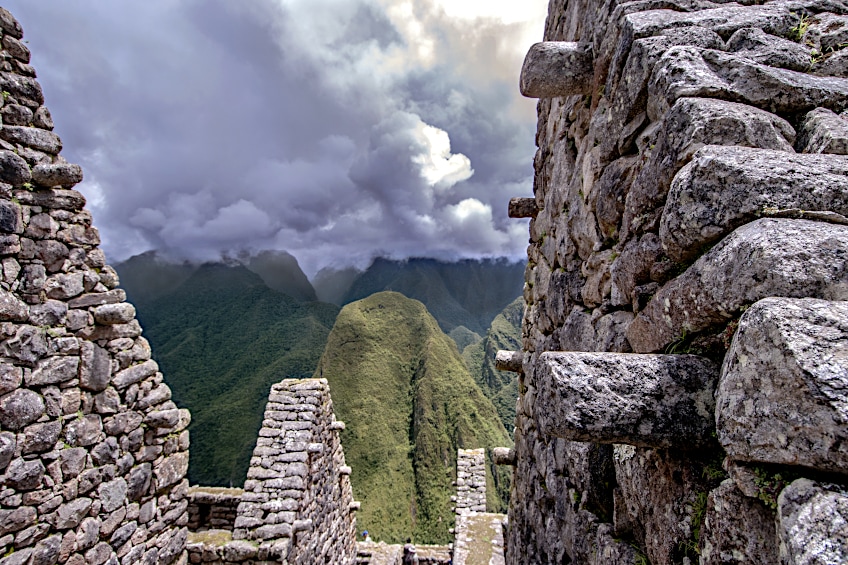 The Incas built earthquake-resistant structures at high-altitudes
The Incas built earthquake-resistant structures at high-altitudes
Over 500 years of tremors have done astonishingly little harm to Inca structures that have been left in their entirety. In places with a drier environment, more basic constructions employed unworked field stones placed with dried mud bricks. Inca houses were often coated in a layer of clay or mud plaster before being brightly painted. Puka Tampu’s walls, for instance, still bear remnants of black, red, yellow, and white paint. Roofs were often built of thatch, which was composed of reeds or grasses arranged on cane or wood poles.
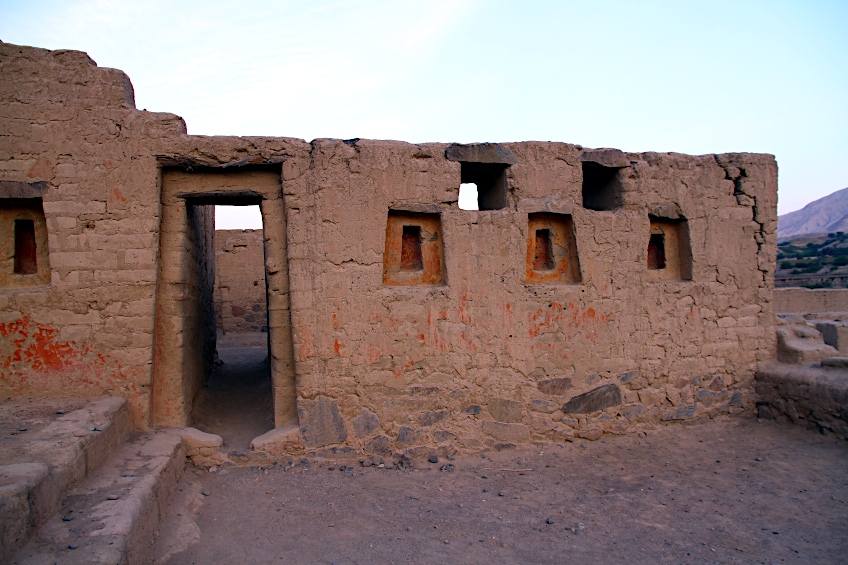 Inca mud-brick construction techniques
Inca mud-brick construction techniques
The poles were linked together with rope and secured to the brick walls using protruding stone pegs. The pegs might be built into the wall or chiseled from one of the stones; they could be square or round; and they occasionally occur on interior walls to serve as pegs, possibly for fabric wall hangings. The top of the gable sometimes featured a stone ring for fastening the roof. Roof inclination was greater in rainier sections of the empire, frequently reaching 60 degrees.
Types of Inca Structures
The capital’s architecture and the imperial structures dispersed around the empire were strikingly similar in appearance to other more ordinary structures. They were, naturally, much bigger in scale and had far finer quality masonry. They might also be more adventurous in design by utilizing curved walls and more richly ornamented, as the holy Coricancha precinct in Cusco, whose curving wall portion exists in part today.
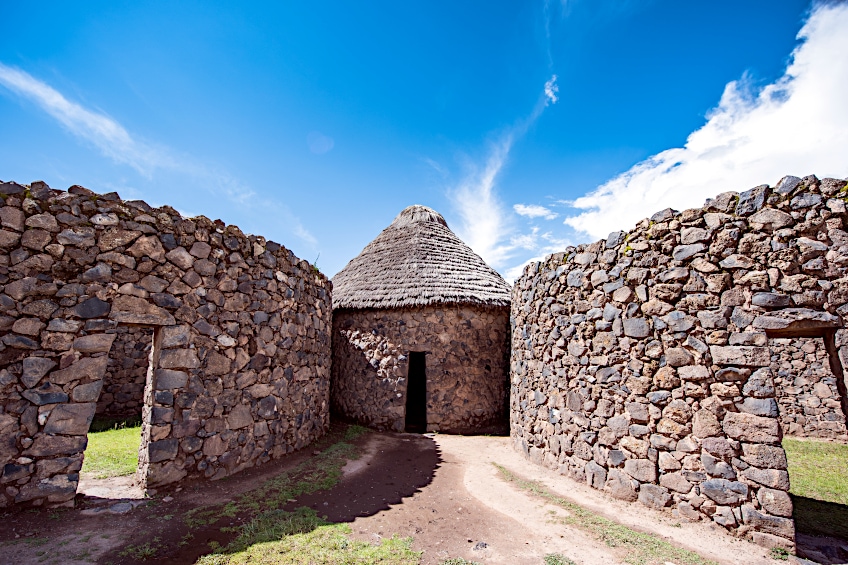 Round Inca storehouse with thatched roof
Round Inca storehouse with thatched roof
Kallanka
A kallanka is a very big structure that has numerous entrances and faces a huge open space, which is commonly trapezoid in shape. They were most likely utilized for public gatherings and as lodging for Inca government representatives, and they were unmistakable public symbols of imperial rule. Palaces were comparable to smaller buildings in architecture, but on a greater scale, with better masonry and frequently walled to prevent access and observation of royal personages.
Ushnu
Every important Inca colony had an ushnu, which represented imperial Inca power over the empire. The ushnu, which was placed on one side of the main square, was a sort of observation platform for parades, big state-sponsored celebrations, and court procedures. Gateways, which typically offered magnificent entrances to communities, were another characteristic of towns, and one of the most spectacular must be Quispiguanca’s great gate, with its two-story tower and three-door jamb.
Collca
Collca were storehouses that were frequently constructed in groups or blocks. They might be spherical or rectangular but contained only one chamber. They are frequently located on slopes, which provide both adequate shade and ventilation, allowing them to better preserve their perishable goods. Gravel underflooring and sewage canals further assisted in maintaining the interior environment dry, allowing potatoes and grains to be stored for two years or longer.
Fortifications
Inca colonies were very seldom fortified because wars were generally performed through set-piece clashes and subjugated peoples’ adherence was guaranteed through economic, political, and cultural means instead of violent forces, and enforcing the imperial architectural style was an essential part of the process. There are, nevertheless, exceptions. Some consider Machu Picchu to be a fortified site, similar to how last-stand villages against the Spanish, such as Ollantaytambo, were guarded with huge block terrace walls.
Terraces
Like Inca structures, hillside terracing employed either loose rocks bonded with mud mortar or carefully cut big stones. They might increase the amount of area accessible for agriculture and improve drainage and water for crops, but they could also be just beautiful and covered with flowers. The terraces of Pisac and Ollantaytambo are among the most stunning, with a distinct and well-planned visual impact. The Inca sculpted even rock outcrops into utilitarian shapes. At Sacsayhuaman, for instance, a throne-like design with stairs was carved into a stone mound. Portions of smaller rock outcrops may have been carved into geometrical forms or designs, such as rectangles and zig-zags cut into the rock, for unexplained reasons.
Notable Inca Sites
Now that we have looked at the type of Inca structures that exist, you might be wondering where to view these buildings. Luckily there are many sites where one can still observe Inca architecture in the present day. Here are the most notable Inca sites that feature remnants of Inca temples and Inca houses.
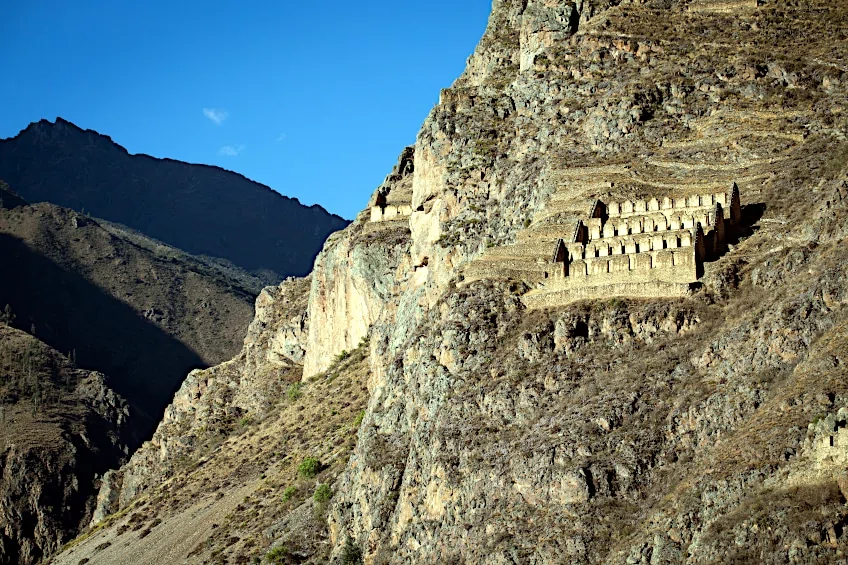 The Inca fortress of Ollantaytambo
The Inca fortress of Ollantaytambo
Coricancha – Cusco, Peru
| Culture | Inca |
| Period | Late Horizon |
| Function | Temple |
| Location | Cusco, Peru |
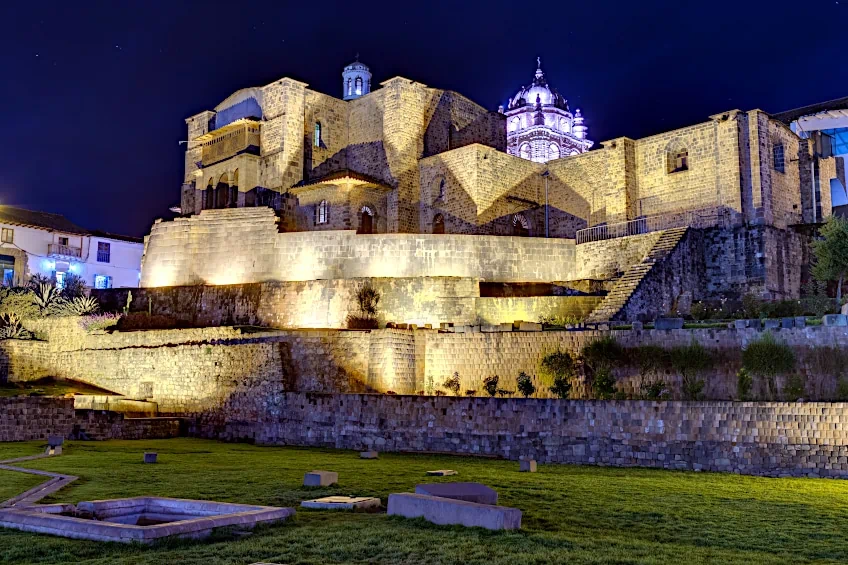 The remains of the Coricancha Inca Temple
The remains of the Coricancha Inca Temple
The Coricancha, formerly known as the Temple of the Sun in Cusco, was one of the most prominent Inca temples in the Inca Empire. The courtyard was formerly filled with golden sculptures, and the walls and flooring were previously coated in sheets of real gold. It was extensively damaged by the conquistadors, who constructed a Christian church on top of the remains, as were Ollantaytambo and many other Inca sites. Major earthquakes have badly damaged the chapel, but the Inca stone walls, constructed of massive, closely interlocking blocks of stone, remain standing owing to the Incas’ expert stone construction.
Machu Picchu – Urubamba Valley, Peru
| Culture | Inca |
| Period | 15th century |
| Function | City |
| Location | Eastern Cordillera, Peru |
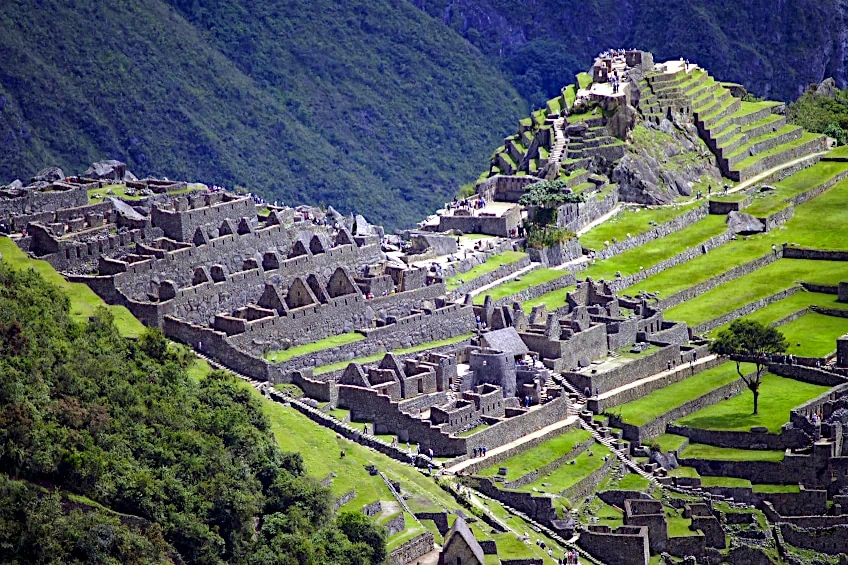 The Inca citadel of Machu Picchu
The Inca citadel of Machu Picchu
Machu Picchu, the world’s most stunning and majestic old Inca ruins, was found in 1911 by Hiram, a historian from Hawaii after lying buried for hundreds of years above the Urubamba Valley. The “Lost City of the Incas” is fully self-contained and undetectable from below, encircled by agricultural terraces and fed by natural springs. Although it was well-known locally, it was mostly forgotten by the rest of the world until it was found in 1911. Machu Picchu has now become Peru’s most popular tourist destination.
Choquequirao – Apurimac, Peru
| Culture | Inca |
| Period | 15th century |
| Function | City |
| Location | Santa Teresa, Peru |
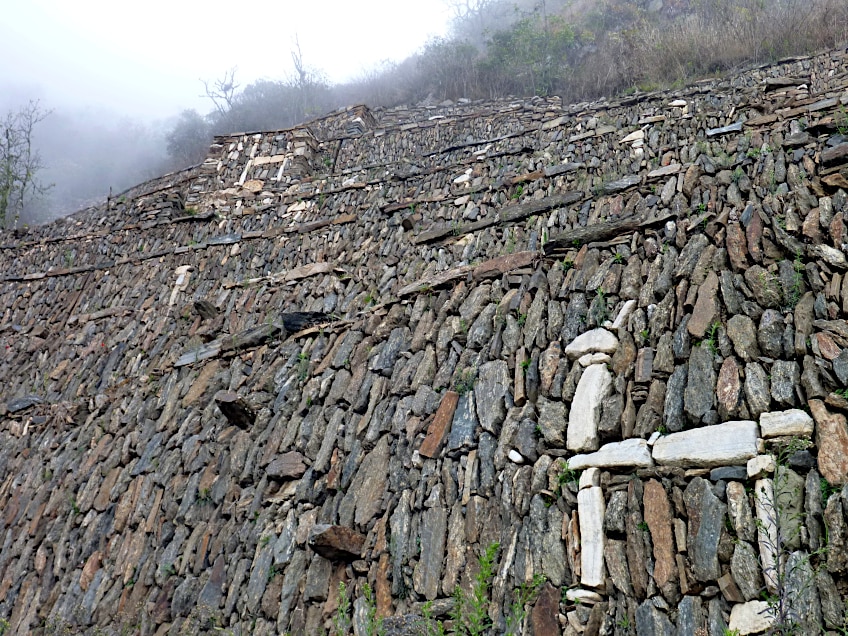 Depictions of Llamas in the walls of Choquequirao
Depictions of Llamas in the walls of Choquequirao
Choquequirao is located 3085 meters above sea level on the boundary between Apurimac and Cusco. The remains of the Inca structure include a staircase layout with 180 terraces. Choquequirao is substantially greater in size than Machu Picchu and was built in an entirely distinct manner. Choquequirao is only accessible by horseback or foot, and as such, it receives far fewer visitors than Machu Picchu. Without vehicles, the journey from Cachora to Choquequirao might take up to four days!
Sacsayhuaman – Cusco, Peru
| Culture | Inca |
| Period | 15th century |
| Function | City |
| Location | Cusco, Peru |
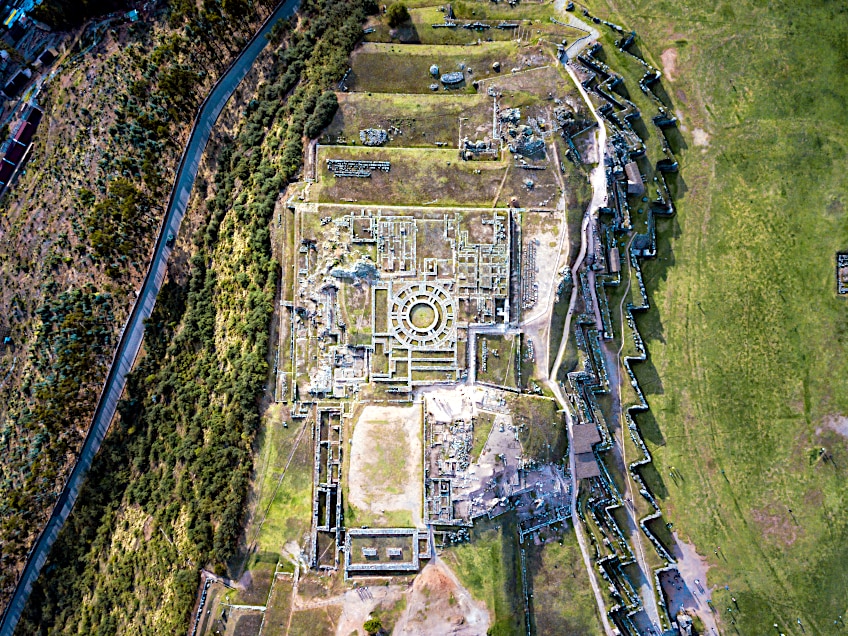 Sacsayhuaman archaeological site seen from above
Sacsayhuaman archaeological site seen from above
Sacsayhuamán is an Inca-walled structure located high above Cusco. Cusco, the imperial capital, was built in the shape of a puma, the Inca dynasty’s emblem. The main square was the puma’s belly, the Tullumayo river was its spine, and the peak of Sacsayhuamán was its head. Three parallel walls are created on separate levels using massive limestones. It is thought that the zigzagging sidewalls depict the puma’s claws. The Inca wall is constructed in such a way that a mere sheet of paper cannot fit between several of the stones.
Isla del Sol – Lake Titicaca, Bolivia
| Culture | Inca |
| Period | 15th century |
| Function | City |
| Location | Lake Titicaca, Bolivia |
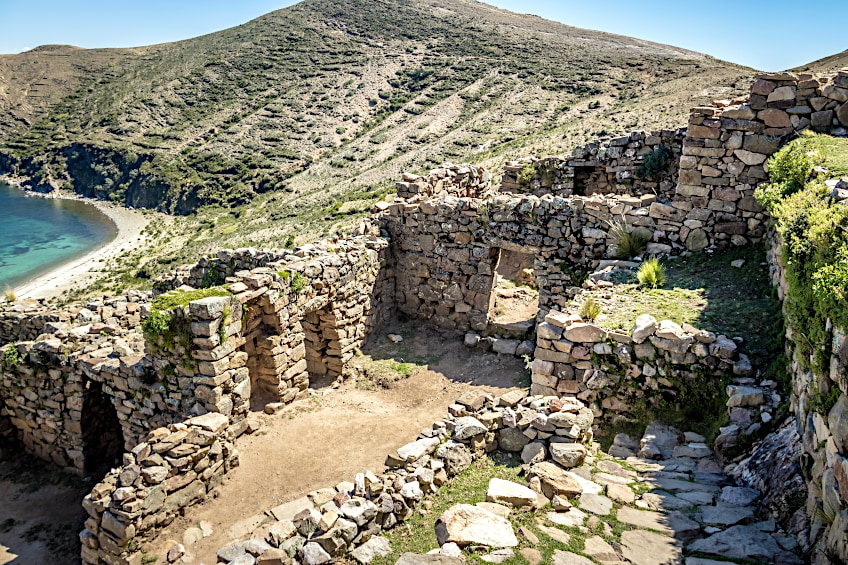 Inca ruins on Isla del Sol at Lake Titicaca
Inca ruins on Isla del Sol at Lake Titicaca
Isla del Sol is a rugged, steep island in Lake Titicaca’s southernmost region. According to Inca mythology, it was the first place to surface after the waters of a huge flood receded and the sun rose from the land to once again brighten the sky. The Incas established various religious structures on the island as the origin of the Sun God. Among these Inca remains is the Chicana, a labyrinth-like structure.
The Incan empire was the group that dominated South America and defined the concept of civilization. The Inca were a Quechua-speaking people of the Andes Mountains who established a significant civilization in the 13th century. The Inca began an invasion of the Andes in 1438, ultimately becoming the biggest empire in the Western Hemisphere. The Inca, like the Chinese and Romans, adorned their empire with polished architectural styles, resulting in a civilization fit to dominate a continent.
Frequently Asked Questions
What Did the Incas Build?
The Incas built incredibly large and durable buildings such as the famed Inca temples and Inca houses. The Inca civilization was primarily an urban people who took use of the opportunity given by the Andes to populate the mountain range with towns. Despite the fact that the empire spanned a wide range of terrains, Inca architecture is distinguished by a significant degree of uniformity.
What Was Unique About Inca Architecture?
Inca stonework was especially well crafted and set. They did not even have any need for the mortar to keep the huge stones in place. The stones are so consistently laid that in most places, it is impossible to even slide a single piece of paper or credit card between the rocks. The fact that this was done by a people who did not possess a written language is truly remarkable, and it sets Inca architecture apart from other sites around the world from the same time period.

I am deeply passionate about history and am constantly fascinated by the rich and complex stories of the past. As the editor-in-chief of learning-history.com, I have the opportunity to share this passion with a wide audience through the creation and distribution of engaging and informative content about historical events, persons, and cultures. Whether it’s through writing articles and blog posts or creating videos or podcasts, I strive to bring the past to life in a way that is both accurate and enjoyable. My expertise in history, combined with my strong writing and communication skills, allows me to effectively communicate complex historical concepts and make them accessible and interesting to a wide range of readers. I am truly grateful for the opportunity to share my love of history with others through my work on learning-history.com.

